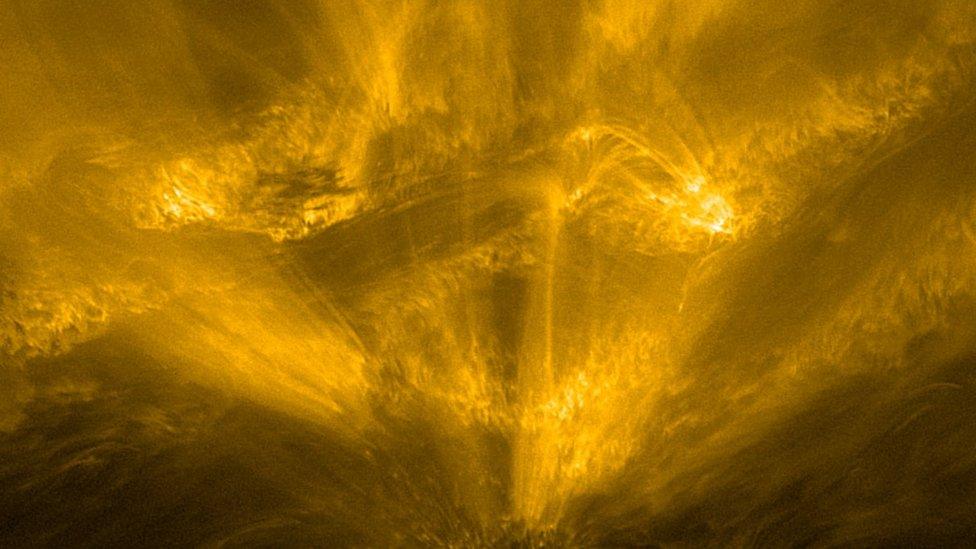Solar Orbiter new images reveal 'solar hedgehog'
- Published
- comments

Solar hedgehog captured by the Solar Orbiter - look right at the bottom of the image for the spikes
Have you ever heard of a solar hedgehog?
Well neither had scientists, until new images of the Sun revealed something mysterious which they have named the solar hedgehog.
In a joint project between The European Space Agency (ESA) and Nasa, with the UK Space Agency also contributing, multiple images taken by the Solar Orbiter have discovered new things on the Sun.
The Solar Orbiter is a probe whose mission is to take the closest ever images of the Sun, without its cameras melting.
The mission
The Solar Orbiter's closest mission to the Sun, took place on 26 March. The probe went inside the orbit of Mercury and captured images of the solar hedgehog, a solar flare, the Sun's south pole and a full view of the Sun.
The Solar Orbiter's closest approach to the Sun, is known as perihelion.
During its pass of the star, the probe had a heat shield to protect it - made from more than 15 layers of titanium multilayer insulation.
The images are really breath-taking!
The photos will help scientists understand the Sun and how it affects space weather - which then affects Earth.
But that doesn't mean it will be easy, the team will have to work hard to see if any of the new features have been spotted before in past solar observations.
"Even if Solar Obiter stopped taking data tomorrow, I would be busy for years trying to figure all this stuff out," said David Berghmans.
It's hugely exciting to see these incredible images and footage; the closest we've ever seen of the Sun, captured during Solar Orbiter's nearest pass so far.
What is a solar hedgehog?
A solar flare captured by the Solar Orbiter
Among the many photos was a new feature which for now has been nicknamed, the hedgehog.
It stretches 25,000km across the Sun, making it quite a small feature on the star. It has lots of spikes of hot and colder gas that spread out in all directions - which is where it got its name from.
Scientists aren't sure yet how or why it forms.
Other images show a solar flare, which can help scientists with solar weather forecasting.
In the next orbit will be in October and they hope to get even closer!
- Published15 May 2022
- Published24 April 2022
- Published6 January 2022
